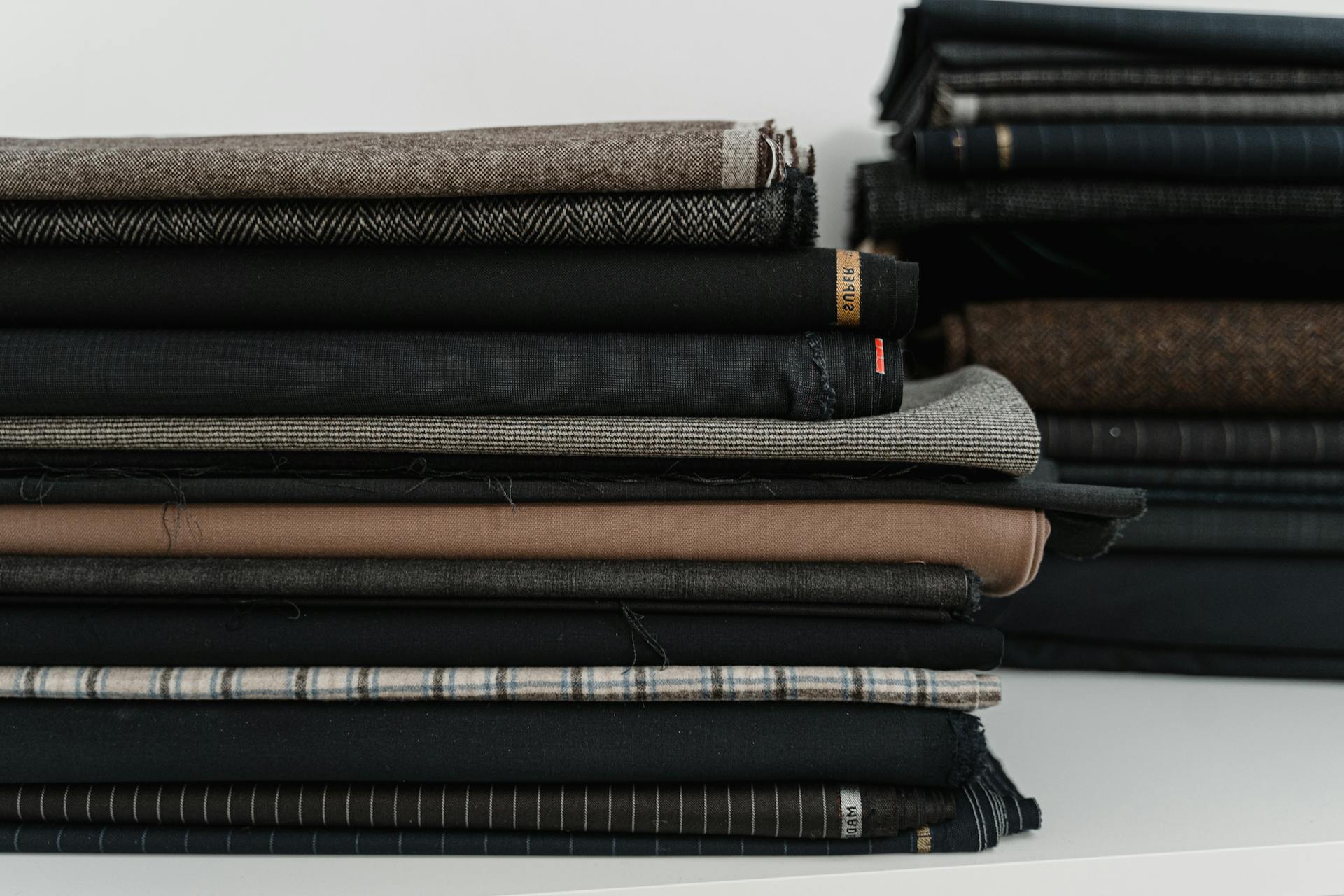Let’s be real for a second. Nobody likes a wedgie.
It sounds funny, but think about it. You can be wearing a thousand-dollar suit or the most stunning dress in the room, but if your foundation layer is bunching, pinching, or sweating, you are going to have a bad time.
We see this every single day here at our warehouse. As wholesalers, we move thousands of units of clothing and accessories every week. We see what sells, we see what gets returned, and we definitely see what customers rave about. And here is the truth: underwear is the unsung hero of the wardrobe. It’s the first thing you put on and the last thing you take off.
Whether you are stocking a boutique, running an online store, or just trying to figure out what to buy for your own drawer, understanding the best fabrics for underwear and the different cuts available is a total game-changer.
So, grab a coffee. Let’s talk about the unmentionables.
Material Matters: Why Fabric is Everything
If you only remember one thing from this guide, make it this: fabric is more important than the cut. You can have the cutest cut in the world, but if the material doesn’t breathe, it’s going to stay in the back of the drawer.
When we look at inventory trends, comfort is king. But what actually makes something comfortable?
The Cotton Reign
Here is the thing about cotton: it just works. It has been the gold standard for decades for a reason. It is breathable, absorbent, and generally hypoallergenic.
However, not all cotton is created equal. We have seen a massive surge in demand for organic cotton underwear. Why the hype? Standard cotton is often treated with a lot of pesticides during farming. Organic cotton skips the chemicals. It usually feels softer against the skin and is way better for the planet. If you are selling to a health-conscious crowd or people with sensitive skin, stocking organic options is a no-brainer.
The Synthetic Trap (and When It’s Okay)
Polyester and nylon get a bad rap. People hear “polyester” and think of sweaty 70s suits. But in the world of types of underwear, synthetics have a place. They are durable and hold color incredibly well.
But here is the catch: they don’t breathe like natural fibers. They trap heat and moisture. That is a recipe for bacteria and irritation.
Pro tip from our warehouse: The only time we genuinely recommend full synthetic underwear is for high-performance activewear. If you are running a marathon, you want moisture-wicking synthetic tech. For sitting at a desk? Stick to natural fibers.
The Rise of Modal and Bamboo
If you haven’t felt modal fabric, you are missing out. It is made from beech tree pulp and is semi-synthetic. It is silky, cool to the touch, and drapes beautifully. Bamboo is similar. These fabrics are fantastic for everyday wear because they offer that “barely there” feeling.
To help you visualize the differences, we put together this quick comparison based on what we see in our returns and reviews:
| Fabric Type | Breathability | Softness | Durability | Best For |
| Cotton | High | High | Medium | Everyday wear, health |
| Organic Cotton | Very High | Very High | Medium | Sensitive skin |
| Polyester | Low | Medium | Very High | Gym / Sports |
| Modal/Bamboo | High | Extreme | Medium | Luxury feel, sleep |
Ladies First: Navigating the Cuts
Okay, let’s talk style. The sheer volume of types of women’s underwear can be overwhelming. We have seen trends come and go (remember when low-rise jeans forced everyone into tiny bikinis?), but some staples remain.
The Brief (aka The Granny Panty)
Guess what? Granny panties are cool again. Seriously. We cannot keep high-waisted briefs in stock. Modern briefs offer full coverage but with higher cuts on the leg to keep them looking flattering. They are the ultimate comfort pick. When you combine a high-waist cut with cotton underwear for women, you have a bestseller on your hands.
The Thong
The thong isn’t going anywhere. It is the only true solution for the dreaded VPL (Visible Panty Line). While they aren’t always the top pick for lounging on the couch, they are essential for leggings and tight dresses.
The Bikini
This is the middle ground. It sits lower on the hips and offers moderate coverage. It’s the “Jack of all trades” in the underwear drawer.
Boyshorts
We love a good boyshort. They are cut straight across the leg, mimicking men’s styles. They are fantastic for sleeping or wearing under loose skirts to prevent thigh chafing (the struggle is real).
One mistake I see all the time: Retailers often stock only “sexy” styles like lace thongs. While those sell, the repeat customers—the ones who come back month after month—are usually looking for high-quality, breathable cotton underwear for women in cuts like bikinis or briefs. Don’t ignore the basics.
For the Guys: It’s Not Just “Boxers or Briefs” Anymore
Men are finally starting to care about their underwear. Gone are the days of buying a 3-pack of scratchy poly-blend shorts once every five years. When looking at the different types of male underwear, we’ve noticed a shift toward support and structure.
Boxer Briefs: The Champion
If we had to pick a winner in sales volume, it is the boxer brief. Hands down. It combines the length of a boxer (preventing chafing) with the support of a brief. It looks good on pretty much every body type. If you are starting a men’s line, fill 70% of your inventory with these.
Trunks
Think of trunks as the boxer brief’s younger, shorter brother. They have a square cut and shorter legs. They are very popular with younger guys who wear slimmer pants, as there is less fabric to bunch up on the thigh.
Briefs
The classic “tighty-whities” have had a glow-up. Modern briefs come in bold colors and better fabrics. They offer the most support and are great for guys with larger thighs who find that legs on boxers tend to ride up.
Boxers
The traditional loose boxer is still around, but it’s moving more into the “sleepwear” category. They offer zero support. Great for freedom, terrible for wearing under slim jeans.
When stocking types of underwear for men, remember that men are creatures of habit. If they find a pair they like, they will buy ten of them. Focus on consistency in your sizing.
Pro Tips from Our Warehouse floor
We have been in the wholesale game a long time. We have seen thousands of boxes come in and go out. Here are a few secrets from the warehouse floor that can help you make better buying decisions for your shop or your personal life.
1. Check the Elastic The fabric might last for years, but the elastic is the weak link. When we inspect samples, we stretch the waistband hard. If it doesn’t snap back immediately, it’s a pass. Cheap elastic degrades in the dryer. Look for wide, cloth-covered waistbands—they tend to last longer and are more comfortable.
2. The “Hand Feel” Test You can tell quality organic cotton underwear instantly by the touch. It shouldn’t feel waxy. If the fabric feels overly smooth or slippery, it might be heavily treated with silicones that wash out after two cycles, leaving you with rough fabric. Good cotton feels… well, like cotton. Dry, soft, and substantial.
3. Sizing is Wildly Inconsistent This is the biggest headache in the clothing industry. A “Medium” in one brand is an “Extra Large” in another. When you are buying types of male underwear or women’s cuts, look for brands that offer size charts with actual inch measurements, not just generic sizes.
4. Blends are Your Friend I know I raved about cotton earlier, but a little bit of synthetic is good. We look for cotton underwear for women or men that has about 5% Spandex or Elastane. That 5% provides the stretch needed to keep the underwear from sagging by the end of the day. 100% cotton can lose its shape after a few hours of wear.
Caring for Your Investment
Whether you are a shop owner advising customers or just trying to make your favorite pair last, washing matters.
-
Cold Water is Key: Hot water destroys elastic. Always wash underwear in cold water.
-
Skip the Fabric Softener: It ruins the moisture-wicking properties of the fabric.
-
Air Dry if Possible: I know, I know. Who has time for that? But the dryer is the enemy of spandex. If you must use the dryer, use low heat.
FAQ
What are the best fabrics for underwear for daily wear? Hands down, the best fabrics for underwear for everyday use are natural fibers like cotton, organic cotton, and modal. These materials allow your skin to breathe and absorb moisture. While synthetics are great for the gym, natural fibers keep you fresh during a standard work day.
Why is cotton underwear for women recommended by doctors? Gynecologists almost always recommend cotton underwear for women because it is breathable and absorbent. Unlike synthetic fabrics like nylon or polyester, cotton prevents moisture from getting trapped, which helps prevent yeast infections and irritation.
What are the most popular types of male underwear right now? When looking at types of male underwear, Boxer Briefs are currently the top seller. They offer the best of both worlds: the coverage of a boxer to prevent chafing and the support of a brief. Trunks (shorter boxer briefs) are also rising in popularity for wearing under slimmer pants.
Is organic cotton underwear really worth the extra cost? We think so! Organic cotton underwear is grown without toxic pesticides and synthetic fertilizers. This usually results in a softer, more durable fabric that is better for people with sensitive skin or allergies—plus, it is much friendlier to the planet.
How often should I replace my underwear inventory? From a personal standpoint, you should replace underwear every 6 to 12 months, as the elastic wears out and bacteria can build up over time. For retailers stocking types of women’s underwear or men’s styles, we recommend refreshing your styles seasonally, though basic cotton staples should be in stock year-round.






